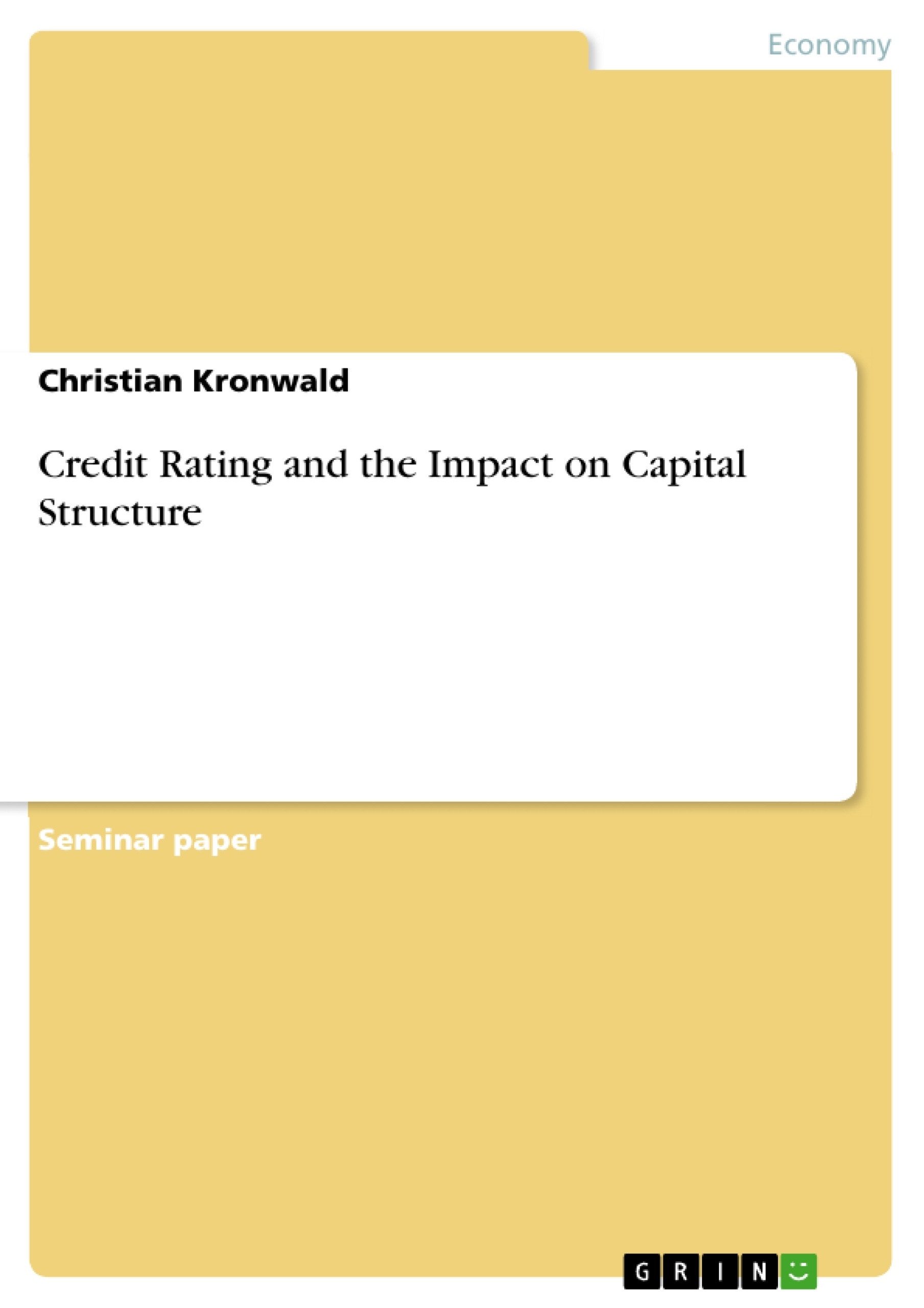The question about capital structure is one of the most important issues which the management of a company faces in implementing their daily business. Therefore, the question of which factors affect capital structure decisions attracts high attention in the past and recent literature on capital structure. There are many papers providing valuable insights into capital structure choices, starting with the paper of Modigliani and Miller (1958). The MM-Theorem is generally considered a purely theoretical result since it ignores important factors in the capital structure decision like bank-ruptcy costs, taxes, agency costs and information asymmetry. Based on this paper many other theories which consider factors neglected by Modigliani and Miller have been evolved. Two major theories are the Tradeoff- and the Pecking-Order-Theory. The former loosens assumptions stated in the MM-Theorem by including bankruptcy costs and taxes while the latter introduces information asymmetry into the capital structure discussion. Chapter 2.1 will give a brief overview of these theories. For complexity reasons these models cannot capture all relevant factors affecting the capital structure policy of a company. However, all these theories disregard one cru-cial factor which plays an important role on capital markets all over the world. The significance of Credit Ratings is gradually increasing, and it is doing so in many re-spects. This paper focuses on the Credit Rating-Capital Structure-Hypotheses (CRCS) developed by Darren J. Kisgen as a modern approach to the capital structure discussion. The hypothesis argues that credit ratings have an impact on capital struc-ture decisions due to discrete costs (benefits) associated with a rating change. Firstly, reasons why credit ratings are material for capital structure decisions will be out-lined. Then, situations in which credit rating effects play a role will be examined. For this issue it is very important to show how it can be measured whether a firm is con-cerned about a rating change or not. Afterwards the CR-CS will be empirically tested. The traditional theories don’t explain the results obtained in these tests. Therefore credit rating effects will be combined with factors discussed in the Tradeoff- and Pecking-Order-Theory. In subsequent empirical tests credit rating factors will be integrated into previous capital structure test to show that the results of the CR-CS tests remain statistically significant...
Inhaltsverzeichnis (Table of Contents)
- 1. Introduction
- 2. Credit Ratings in the Context of Traditional Capital Structure Theories.
- 2.1 The Tradeoff and Pecking-Order Theory.
- 2.2 Credit Ratings
- 2.3 The Credit Rating-Capital Structure-Hypothesis
- 3. Testing the Impact of Credit Ratings on Capital Structur Decisions....
- 3.1 Specification of the Test
- 3.2 Data and Summary Statistics.
- 3.3 Empirical Tests of the CR-CS
- 4. Incorporating the CR-CS in the existing Capital Structure Theory
- 4.1 Credit Rating Effects vs. Tradeoff and Percking-Order Theory..
- 4.2 Nesting Credit Rating Effects into Tradeoff and Pecking-Order Tests..........
- 5. Complementing the Credit Rating-Capital Structure-Hypothesis ......
- 5.1 Capital Structure Decisions after a Rating Change.
- 5.2 Testing the ex post Behavior
- 6. Conclusion.
Zielsetzung und Themenschwerpunkte (Objectives and Key Themes)
This seminar paper investigates the impact of credit ratings on a firm's capital structure decisions. The paper aims to explore the relationship between credit ratings and capital structure, testing the hypothesis that credit ratings significantly influence a firm's debt and equity choices.
- The role of credit ratings in capital structure decisions
- The impact of credit ratings on debt and equity issuance
- Testing the Credit Rating-Capital Structure-Hypothesis
- Incorporating credit rating effects into existing capital structure theories
- Examining capital structure decisions after a rating change
Zusammenfassung der Kapitel (Chapter Summaries)
- Chapter 1 introduces the topic of credit ratings and their potential influence on capital structure. It provides background information and outlines the objectives and research questions of the paper.
- Chapter 2 explores the traditional capital structure theories, focusing on the tradeoff and pecking-order theory, and introduces the concept of credit ratings and their role in influencing capital structure decisions.
- Chapter 3 describes the empirical methodology used to test the impact of credit ratings on capital structure choices. This chapter outlines the test specifications, data collection, and the statistical techniques employed to analyze the data.
- Chapter 4 discusses the integration of credit rating effects into the established capital structure theories, aiming to provide a more comprehensive understanding of the interplay between credit ratings, firm characteristics, and capital structure decisions.
- Chapter 5 delves into the specific scenarios of capital structure decisions following a credit rating change. The chapter investigates the behavior of firms after experiencing a rating upgrade or downgrade, focusing on their subsequent debt and equity issuance choices.
Schlüsselwörter (Keywords)
This seminar paper focuses on the intersection of credit ratings, capital structure decisions, and firm behavior. Key terms and concepts include credit rating agencies, credit rating-capital structure hypothesis, tradeoff theory, pecking-order theory, debt and equity issuance, empirical tests, and capital structure adjustment.
- Arbeit zitieren
- Christian Kronwald (Autor:in), 2009, Credit Rating and the Impact on Capital Structure, München, GRIN Verlag, https://www.grin.com/document/146614



